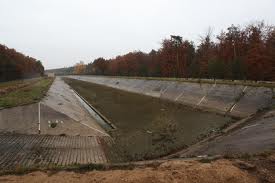Model prediction to monitor the influence of porosity effect on shigella transport to ground water aquifers in elele rivers states of Nigeria
Keywords:
Model prediction, Transport, WaterAbstract
Model prediction to monitor the influence of porosity effecton shigella transport to ground water aquifers has been examined, the modelwhere generated from a mathematical equation from an experimental values, themodel equation from an excel plot where resolved to produced a theoreticalvalues, the application of least square method where applied to resolvedpolynomial generated equations, the theoretical values where compared withother experimental values from differentlocations, both parameters developed a valuable fit. this implies that the model can be applied to determine that degree of porosity in various formation,high porosity rate where found to influence the degree ofshigella concentration, this is confirmed through the deposited degree ofporosity at different formations, high degree of hydraulic conductivity whereexperienced in the study location, base on the deposition of high degree of porosity recorded between 0.2to 5m, although some proof to be very low, but it can not be compared when the depth increased to homogenousfine and coarse formation. The model will definitely be a benchmark to monitordegree of porosity that reflects on the transport of shigella to ground wateraquifers in the study area.
References
Barr, D.W., 2001. Coefficient of permeability determined by measurable parameters. Ground Water, 39, no. 3, 356-361.
Boadu, F.K., 2000. Hydraulic conductivity of soils from grain-size distribution: new models. Journal of Geotechnical and Geoenvironmental Engineering, 126, no. 8, 739-746.
Tina, H., 2006. Environmental Isotopic and Hydrochemical Characteristics of Groundwater from the Cretaceous-Eocene Limestone Aquifer in the Keta Basin, Ghana, and the Coastal Sedimentary Basin of Togo Ph.D. Thesis, Geological Institute Faculty of Science, University of Copenhagen
Chapuis, R.P., 2004. Predicting the saturated hydraulic conductivity of sand and gravel using effective diameter and void ratio. Journal of Canadian Geotechnology, 41, 787-795.
Chapuis, R.P., Aubertin, M., 2003. On the use of the Kozeny-Carman equation to predict the hydraulic conductivity of soils. Journal of Canadian Geotechnology, 40, 616-628.
Conrad, C.M., 2006. Air-based measurement of permeability in pebbly sands. Masters Thesis, Department of Geological Sciences, Wright State University, Dayton, OH, 55 p.
Conrad et al. 2007. Air-based measurement of permeability in pebbly sands. (Unpublished).
Costa, A., 2006. Permeability-porosity relationship: A reexamination of the Kozeny- Carman equation based on a fractal pore-space geometry assumption.Geophysical Research Letters, 33, 1-5.
Kamann, P.J., 2004. Porosity and permeability in sediment mixtures. Masters Thesis, Department of Geological Sciences, Wright State University, Dayton, OH, 51 p.
Koltermann, C.E., Gorelick, S.M., 1995. Fractional packing model for hydraulic conductivity derived from sediment mixtures. Water Resources Research, 31, no. 12, 3283-3297.
Revil, A., Cathles, L.M., 1999. Permeability of shaly sands. Water Resources Research, 35, no. 3, 651-662.
Revil, A., Grauls, D., Brévart, O., 2002. Mechanical compaction of sand/clay mixtures. Journal of Geophysical Research, 107, no. B11, 2293.
Peter, M.P., 2005. Porosity and permeability of bimodal sediment mixtures using natural sediment A thesis submitted in partial fulfillment of the requirements for the degree of Master of Science.

Downloads
Published
How to Cite
Issue
Section
License
Copyright (c) 2013 Solomon Ndubuisi Eluozo

This work is licensed under a Creative Commons Attribution-NonCommercial-NoDerivatives 4.0 International License.



